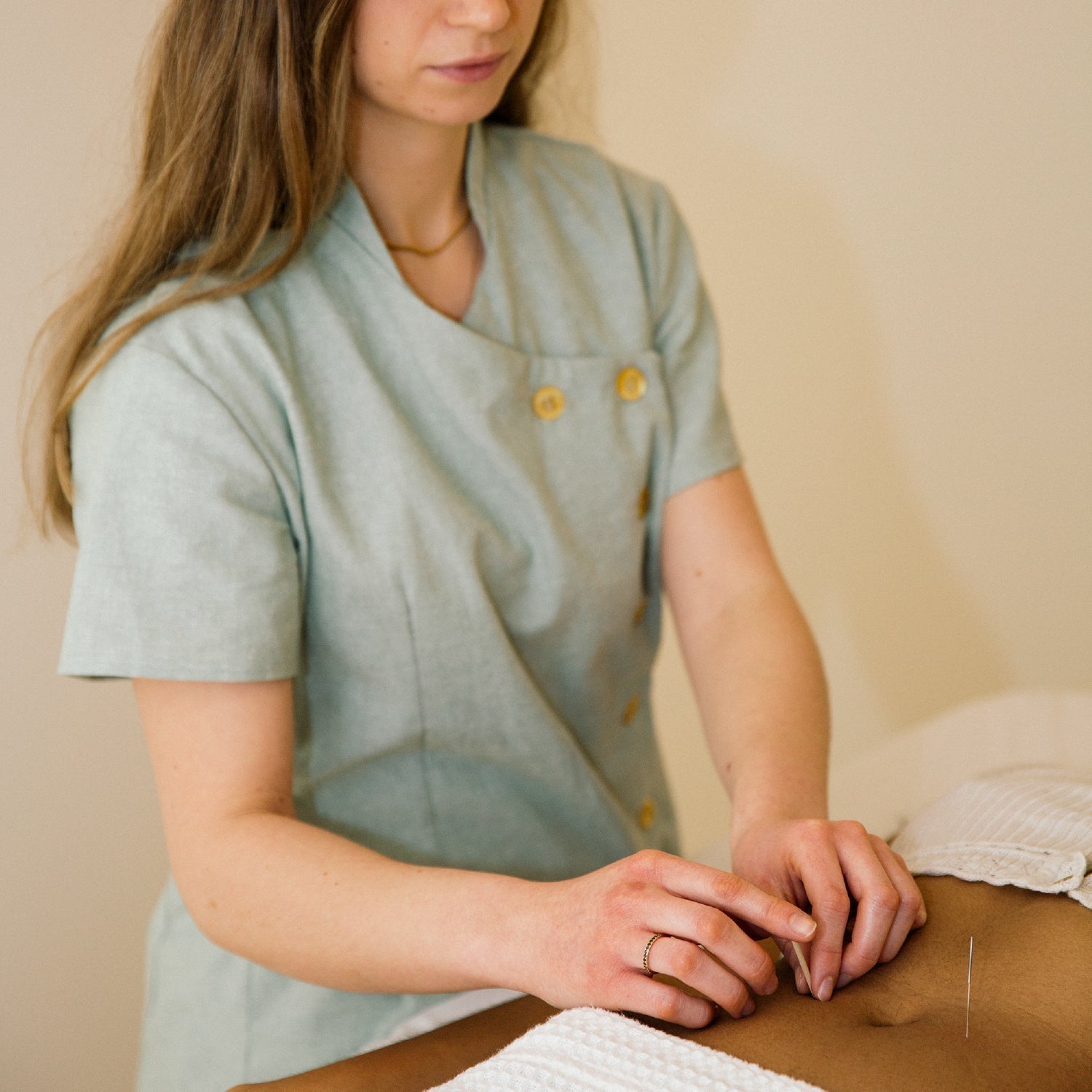What is Dry Needling?
Dry needling involves inserting several filiform needles into the body’s “trigger points” (or knotted areas) to help increase blood flow and relieve muscle pain, spasms, or tension. These treatments are primarily used to treat a range of musculoskeletal conditions – such as muscle pain, fascial pain syndrome as well as common sports injuries.
What is Acupuncture?
Acupuncture is a modality of Traditional Chinese Medicine (TCM); a complete medical system that has been used to diagnose, treat, and prevent illnesses for more than 2,000 years.
Acupuncture stimulates specific points by gently inserting fine needles into your skin. Doing so elicits a physiological response, stimulating the nervous system. This triggers the body to release chemicals and hormones that affect how we feel and influence other parts of the body's regulatory system, muscles, and connective tissue to release endorphins and help your body relax.
Similarities
- Both involve puncturing the skin with fine needles to needle specific body’s points
- Both elicit a physiological response
- Both can provide pain relief
Differences
- Acupuncture has been around for thousands of years; Dry needling is relatively new.
- Acupuncture stems from Eastern medicine; Dry needling from Western medicine
- Acupuncture treats everything from fertility to anxiety and insomnia; dry needling only treats musco-skeletal issues.
- Acupuncture prioritises the person’s root causes, not the problem; Dry needling prioritises the problem.
- Acupuncture is backed by years of scientific research; Research is limited on the efficiency of dry needling.
- Acupuncture treats physical and mental issues by altering brain chemistry; Dry needling primarily treats physical conditions by releasing tension
- To be a licensed acupuncturist you need to complete a 3 year degree. To be able to practice dry-needling you can take a weekend course.
From a biomedical perspective, a migraine is a common, chronic and intermittently disabling neurovascular disorder.
The presence of aura is a very common type of migraine. Migraine with aura as sporadic hemiplegic migraine. (In this case it can get triggered by certain foods, certain odours, bright light, too little or too much sleep, physical exertion, stress or minor head trauma.) Hemiplegic migraine presents with motor weakness at times, symptoms that occur just before the headache, like hallucinations, numbness, changes in speech, visual changes.

